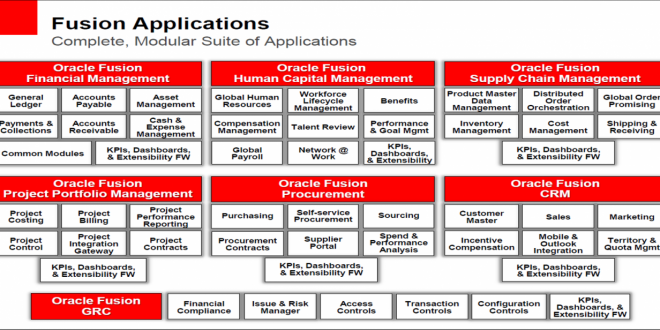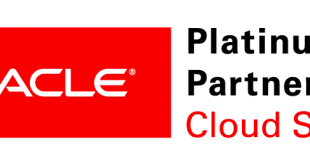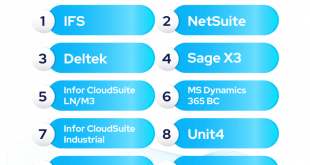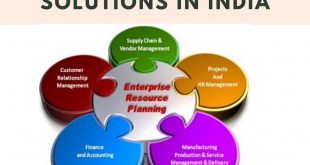Delving into the realm of HCM products, this comprehensive guide unveils the transformative potential they hold for organizations seeking to elevate their human capital management practices. From exploring their diverse offerings to unraveling their myriad benefits, this discourse embarks on an immersive journey into the world of HCM solutions.
HCM products empower businesses to streamline HR processes, enhance employee engagement, and foster a culture of productivity and innovation. Their intuitive interfaces, robust functionalities, and seamless integrations unlock a wealth of opportunities for organizations to optimize their workforce management strategies.
HCM Products Overview
HCM products, or human capital management products, are software applications that help organizations manage their workforce. They can automate tasks such as payroll, benefits administration, and performance management, and provide insights into workforce trends and patterns.
There are many different types of HCM products available, each with its own strengths and weaknesses. Some of the most popular types of HCM products include:
- Core HR systems:These systems manage core HR functions such as payroll, benefits, and time and attendance.
- Talent management systems:These systems help organizations attract, develop, and retain talent.
- Learning and development systems:These systems help organizations provide training and development opportunities to their employees.
- Compensation and benefits systems:These systems help organizations manage compensation and benefits programs.
- HR analytics systems:These systems help organizations analyze workforce data to identify trends and patterns.
HCM products can provide a number of benefits to organizations, including:
- Increased efficiency:HCM products can automate many tasks, which can free up HR professionals to focus on more strategic initiatives.
- Improved accuracy:HCM products can help to ensure that HR data is accurate and up-to-date.
- Better decision-making:HCM products can provide insights into workforce trends and patterns, which can help organizations make better decisions about their workforce.
- Increased employee satisfaction:HCM products can help to improve employee satisfaction by providing them with self-service tools and access to information about their benefits and performance.
Some of the most popular HCM products include:
- Workday
- SAP SuccessFactors
- Oracle HCM Cloud
- ADP Workforce Now
- BambooHR
HCM Product Features: Hcm Products
Human Capital Management (HCM) products are designed to help organizations manage their workforce effectively. These products offer a range of features that can help organizations with tasks such as recruiting, onboarding, performance management, and payroll processing.
When choosing an HCM product, it is important to consider the specific needs of your organization. Some of the key features to consider include:
Core HR Features
- Employee database management
- Time and attendance tracking
- Payroll processing
- Benefits administration
Talent Management Features
- Recruiting and applicant tracking
- Onboarding and offboarding
- Performance management
- Succession planning
Learning and Development Features
- Learning management system (LMS)
- Training course management
- Employee development planning
- Performance management
Analytics and Reporting Features
- HR analytics and reporting
- Employee engagement surveys
- Performance management dashboards
- Compensation and benefits benchmarking
HCM Product Implementation

Implementing an HCM product involves several steps:1.
-
-*Planning
Define the project scope, objectives, and timeline. Identify stakeholders and their roles.
- 2.
- 3.
- 4.
- 5.
- 6.
-*Data preparation
Cleanse and migrate existing data into the new system. Map data fields to ensure seamless integration.
-*Configuration
Customize the HCM product to meet specific business requirements. Configure workflows, security settings, and user interfaces.
-*Testing
Conduct thorough testing to ensure the system functions as intended. Identify and resolve any bugs or errors.
-*Training
Train users on the new system to ensure adoption and proficiency. Provide ongoing support and documentation.
-*Deployment
Go live with the HCM product. Monitor the system and make any necessary adjustments to optimize performance.
Challenges of HCM Product Implementation, Hcm products
Implementing an HCM product can pose several challenges:
-
-*Data integration
Migrating large volumes of data from legacy systems can be complex and time-consuming. Data inconsistencies and data mapping issues can arise.
-*User adoption
Resistance to change and lack of training can hinder user adoption. Ensuring user buy-in and providing ongoing support is crucial.
-*Technical complexity
HCM products can be complex systems with multiple modules and functionalities. Managing the technical aspects of implementation requires skilled resources.
-*Budget constraints
Implementing an HCM product can be expensive. Balancing costs with project scope and objectives is essential.
-*Timelines
Implementation timelines can be tight, requiring careful planning and execution.
Tips for Successful HCM Product Implementation
To ensure a successful HCM product implementation, consider the following tips:
-
-*Engage stakeholders
Involve stakeholders throughout the process to gather requirements, address concerns, and secure buy-in.
-*Plan meticulously
Develop a detailed project plan with clear timelines, roles, and responsibilities.
-*Communicate effectively
Keep stakeholders informed about project progress and address any concerns or issues promptly.
-*Test thoroughly
Conduct rigorous testing to identify and resolve any potential issues before deployment.
-*Train users adequately
Provide comprehensive training and support to ensure user proficiency and adoption.
-*Monitor and adjust
Monitor the system after deployment and make necessary adjustments to optimize performance and user satisfaction.
HCM Product Integration
HCM products can be integrated with other systems in a variety of ways, including:
- Through APIs:APIs allow HCM products to exchange data with other systems, such as ERP, CRM, and payroll systems.
- Through web services:Web services provide a way for HCM products to communicate with other systems over the internet.
- Through file-based integration:File-based integration involves exchanging data between HCM products and other systems through files.
Integrating HCM products with other systems can provide a number of benefits, including:
- Improved data accuracy:By integrating HCM products with other systems, organizations can ensure that employee data is consistent and accurate across all systems.
- Increased efficiency:Integration can automate tasks and processes, which can save organizations time and money.
- Improved decision-making:By having all employee data in one place, organizations can make better decisions about their workforce.
Here are some examples of successful HCM product integrations:
- A large manufacturing company integrated its HCM product with its ERP system to improve data accuracy and streamline HR processes.
- A healthcare organization integrated its HCM product with its CRM system to provide better customer service.
- A government agency integrated its HCM product with its payroll system to automate payroll processing.
HCM Product Pricing
The pricing of HCM products can vary significantly depending on a number of factors, including the size of the organization, the number of employees, the features and functionality required, and the deployment model.
There are a number of different pricing models for HCM products, including:
- Per-employee pricing:This is the most common pricing model for HCM products. Under this model, organizations pay a monthly or annual fee for each employee who uses the system.
- Per-module pricing:Under this model, organizations pay a monthly or annual fee for each module of the HCM system that they use. This can be a more cost-effective option for organizations that only need a few of the features and functionality offered by the HCM system.
- Tiered pricing:Under this model, organizations pay a monthly or annual fee based on the number of employees who use the system and the features and functionality required. This can be a more cost-effective option for organizations with a large number of employees or that require a high level of features and functionality.
When comparing the pricing of different HCM products, it is important to consider the following factors:
- The size of the organization:Larger organizations will typically pay more for HCM products than smaller organizations.
- The number of employees:The more employees who use the system, the more the organization will typically pay.
- The features and functionality required:Organizations that require a high level of features and functionality will typically pay more for HCM products than organizations that only need a few basic features.
- The deployment model:On-premise HCM products are typically more expensive than cloud-based HCM products.
It is also important to consider the total cost of ownership (TCO) of HCM products when making a purchasing decision. TCO includes the purchase price of the system, as well as the ongoing costs of maintenance, support, and upgrades.
HCM Product Trends
The Human Capital Management (HCM) product landscape is constantly evolving, driven by technological advancements and changing business needs. In this section, we will explore the latest trends in HCM products and identify the emerging technologies that are shaping their future.
One of the most significant trends in HCM products is the increasing adoption of cloud-based solutions. Cloud-based HCM systems offer a number of advantages over on-premise solutions, including lower costs, greater flexibility, and easier access to data. As a result, many businesses are migrating their HCM systems to the cloud.
Another major trend in HCM products is the growing use of artificial intelligence (AI). AI can be used to automate a variety of tasks, such as recruiting, onboarding, and performance management. This can help businesses save time and money, while also improving the accuracy and efficiency of their HCM processes.
In addition to cloud-based solutions and AI, other emerging technologies that are shaping the future of HCM products include:
Blockchain
- Blockchain is a distributed ledger technology that can be used to securely store and track data.
- Blockchain has the potential to revolutionize HCM by providing a secure and transparent way to manage employee data.
Virtual Reality (VR) and Augmented Reality (AR)
- VR and AR are immersive technologies that can be used to create realistic and engaging experiences.
- VR and AR have the potential to be used in HCM for training, onboarding, and performance management.
The Future of HCM Products
The future of HCM products is bright. As technology continues to evolve, we can expect to see even more innovative and groundbreaking HCM solutions. These solutions will help businesses to manage their human capital more effectively and efficiently, and will ultimately lead to improved employee productivity and engagement.
Concluding Remarks
In conclusion, HCM products have emerged as indispensable tools for organizations seeking to unlock the full potential of their human capital. By embracing these innovative solutions, businesses can gain a competitive edge, foster a thriving work environment, and drive sustainable growth through the strategic management of their most valuable asset: their people.
Originally posted 2024-05-19 20:55:08.
 Bussines News Daily
Bussines News Daily



